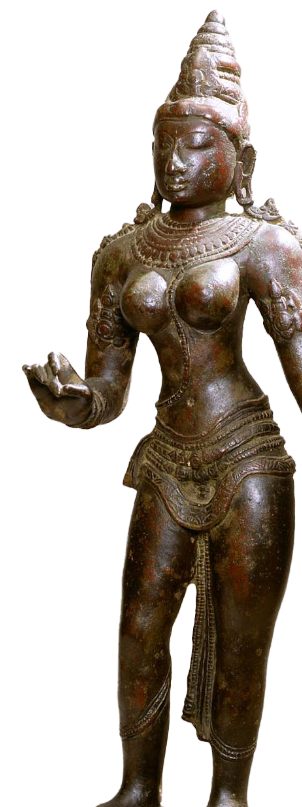848 CE–1279 CE
Public Administration of the Medieval and Later Cholas
Medieval and later Chola rulers were descendants of the ancient Cholas dynasty of
the Sangam age. During the middle of the 9th century CE, they rose to prominence
in South India after the long eclipse of four centuries and established one of
the greatest maritime empires of the world. The Medieval Cholas also known as
Imperial Cholas welded the whole Tamil country into a powerful state and
extended its influence along the east coast as far as Kalinga in the north.
Through their naval strength, they extended their influence in Southeast Asia,
Sri Lanka, and Maldives, thus claiming for them an imperial status. The rulers
of Medieval Cholas were in continuous conflict with Eastern Chalukyas for the
control of Vengi. However, both kingdoms merged into a single state under the
Later Cholas.[1] Aditya I (871 CE – 907 CE), Rajaraja I (985 CE –
1014 CE), Rajendra Chola (1014 CE – 1044 CE), and Kulottunga I (1070 CE – 1122
CE) were the greatest kings of the Cholas dynasty. Rajaraja I, in particular, is
considered the greatest ruler because he organised a closely knit and efficient
civil service, and recognised the importance of the navy and promotion of
maritime trade. Religion, architecture, painting, and literature also flourished
during his reign.[2]
The Cholas of the early medieval period built up a highly centralised empire
characterised by the superior executive strength of an efficient bureaucracy,
supported by a strong army with numerous regiments and a navy with powerful
ships. Their centralised bureaucratic machinery similar to the ‘secretariat’ in
modern governments looked after the day-to-day administration of the state. The
hierarchy of officials as representatives of the central government were posted
in different administrative units of the Chola Empire with autonomies granted to
village assemblies in this period.[3]
The village administration of Cholas is widely celebrated as we find evidence of
the practice of democracy in their local self-government. Uttaramerur
inscription from the reign of Chola king Parantaka I (907-953 AD), recently
referred to by honourable Prime Minister of India, Shri Narendra Modi, when he
says “India is the world’s oldest democracy, it is the mother of democracy.
There are numerous historical references to this. An important reference is
Tamil Nadu. The inscription found there is like a local constitution for the
gram sabha. It tells how the assembly should be run, what should be the
qualification of members, what should be the process to elect the members,
and how a member would be disqualified.” [4]
Know the Sources +





 add-knowledge
add-knowledge